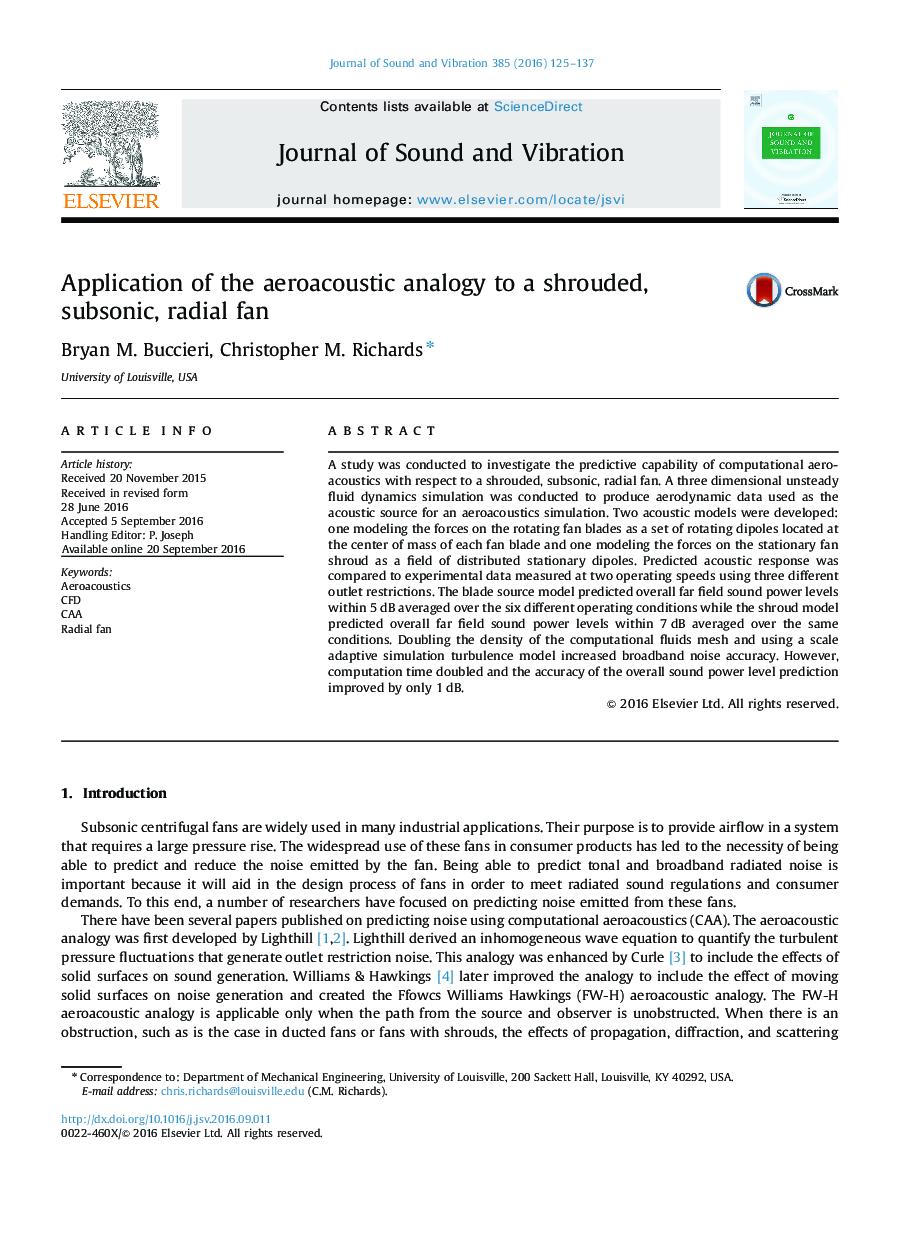| Article ID | Journal | Published Year | Pages | File Type |
|---|---|---|---|---|
| 4924581 | Journal of Sound and Vibration | 2016 | 13 Pages |
Abstract
A study was conducted to investigate the predictive capability of computational aeroacoustics with respect to a shrouded, subsonic, radial fan. A three dimensional unsteady fluid dynamics simulation was conducted to produce aerodynamic data used as the acoustic source for an aeroacoustics simulation. Two acoustic models were developed: one modeling the forces on the rotating fan blades as a set of rotating dipoles located at the center of mass of each fan blade and one modeling the forces on the stationary fan shroud as a field of distributed stationary dipoles. Predicted acoustic response was compared to experimental data measured at two operating speeds using three different outlet restrictions. The blade source model predicted overall far field sound power levels within 5Â dB averaged over the six different operating conditions while the shroud model predicted overall far field sound power levels within 7Â dB averaged over the same conditions. Doubling the density of the computational fluids mesh and using a scale adaptive simulation turbulence model increased broadband noise accuracy. However, computation time doubled and the accuracy of the overall sound power level prediction improved by only 1Â dB.
Keywords
Related Topics
Physical Sciences and Engineering
Engineering
Civil and Structural Engineering
Authors
Bryan M. Buccieri, Christopher M. Richards,
